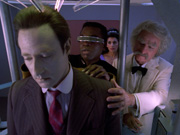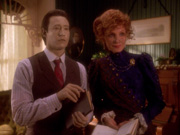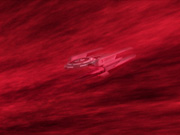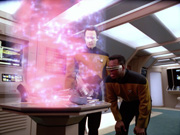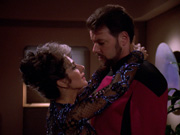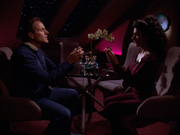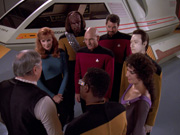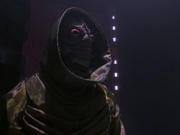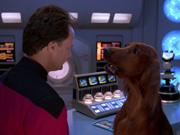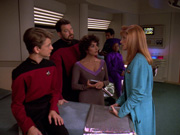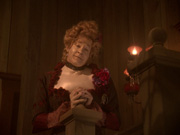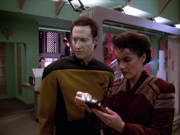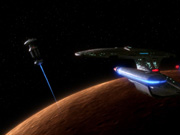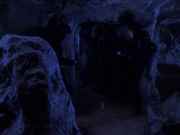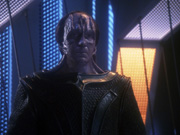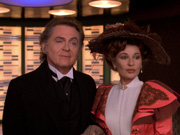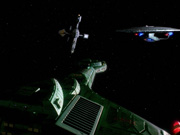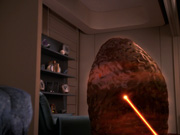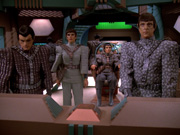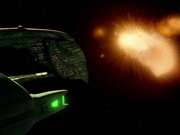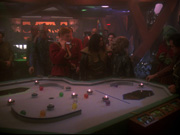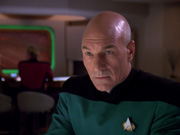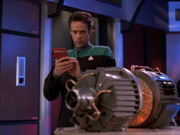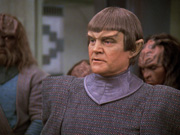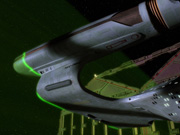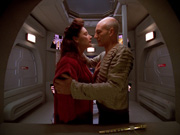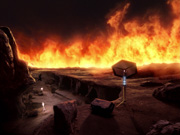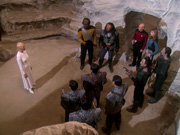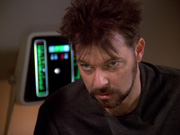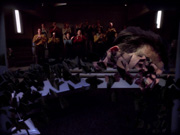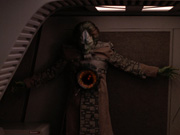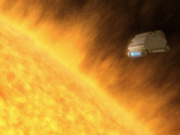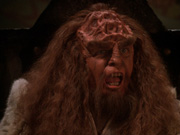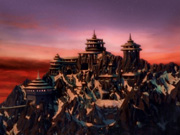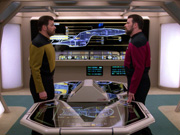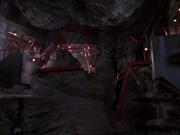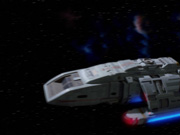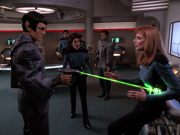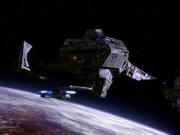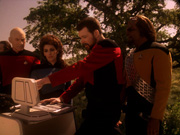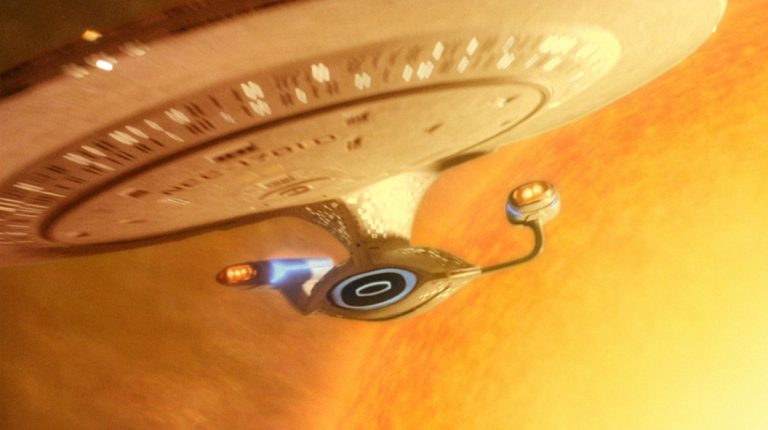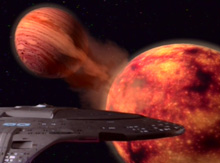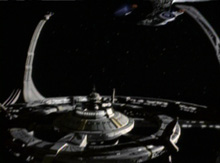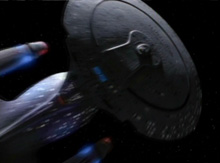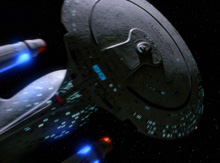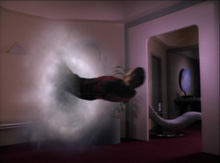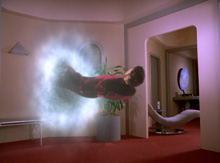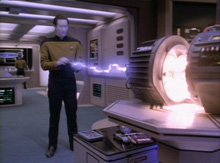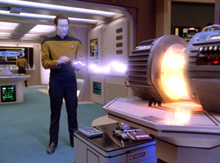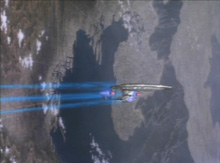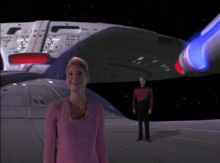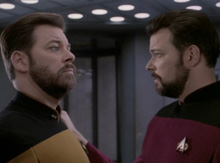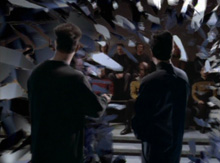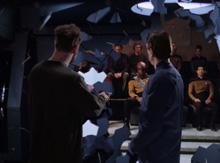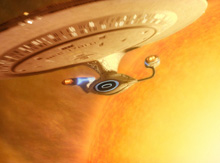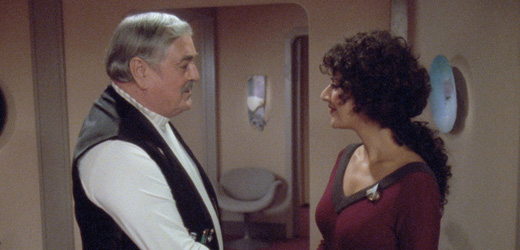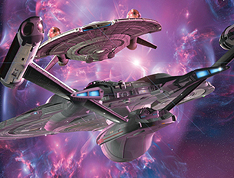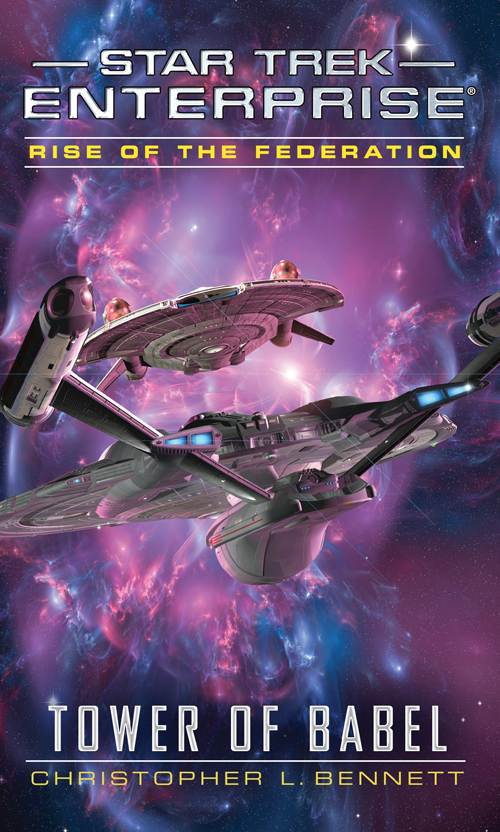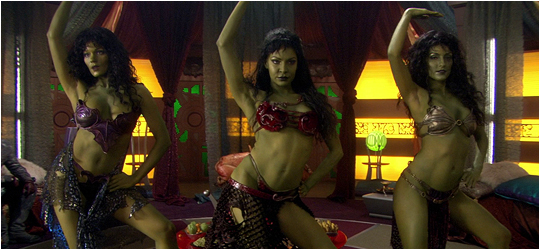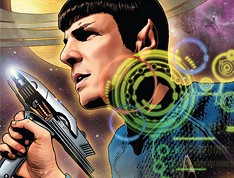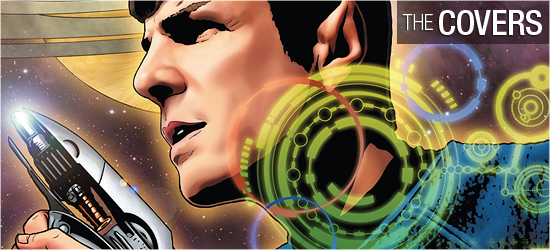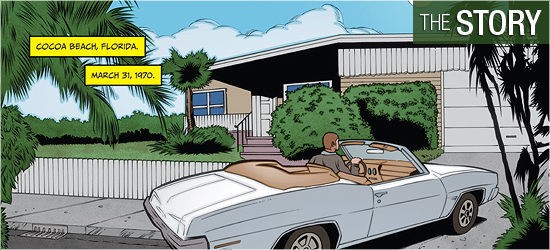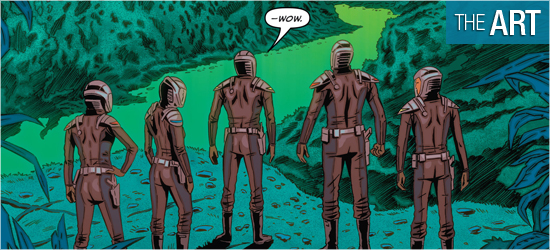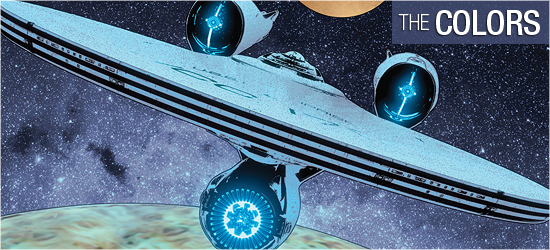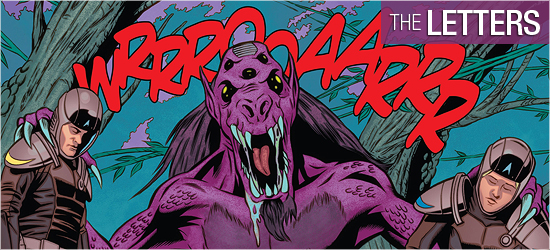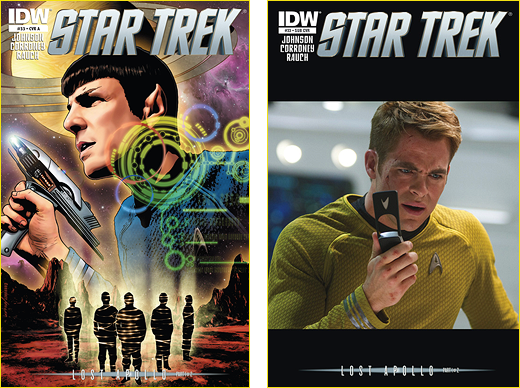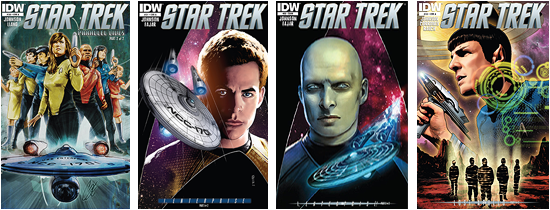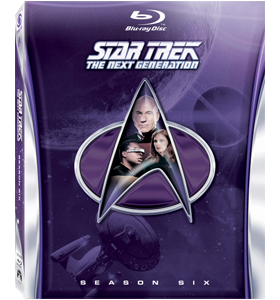 Star Trek: The Next Generation Season 6
Star Trek: The Next Generation Season 6
Release Date: June 24, 2014
Blu-Ray Disc • 6 Discs
CBS Home Entertainment








Seven months after Season 5 hit shelves, we’ve arrived at the next stop on the journey through Star Trek: The Next Generation remastered for high definition Blu-ray. Next Gen‘s sixth season consistently ranks highly with fans, bringing together some of the series’ most memorable and hard-hitting episodes. This year of adventures feels like a definite step-up compared to the somewhat uneven fifth season, with very few episodes encouraging me to hit the fast-forward button.
With the absence of creator Gene Roddenberry following his death in 1991, the show gradually started to embrace a less Utopian attitude to 24th century life, incorporating issues such as espionage (“Chain of Command“), piracy (“Starship Mine“), violence (“Descent, Part I“) and even torture (“Chain of Command“). Naturally, this all made for much meatier storylines and succeeds in adding tremendous depth to many of the characters (especially Picard and Riker, who both undergo significant development in the sixth season).
The penultimate year of TNG always felt like Star Trek at its finest to me. Indeed, both co-producer Ronald D. Moore and actor Brent Spiner don’t hesitate in naming this as their favorite season. It’s like a box of 26 different chocolates, each with their own unique flavor; whether you have the desire to boldly go on a galactic romp (“The Chase“), revisit history – both past (“Ship in the Bottle“, “A Fistful of Datas“) and future (“Relics“), delve into a psychological thriller (“Frame of Mind“) or confront the deepest questions of life (“Tapestry“), love (“Lessons“) and existence (“The Quality of Life“) – Season Six has everything you need.

Two Generations Unite – Scotty and Picard in “Relics“, Season Six
Remastering Quality
Two years down the line, and Star Trek: The Next Generation‘s massive remastering project is entering its final hours. As I type this review, the team over at CBS Digital in Los Angeles are putting the finishing touches to TNG’s final season (due out later this year). After cutting their teeth on the first season back in 2012, this group of industry professionals have perfected their individual techniques to create a product which consistently draws rapturous praise from hundreds of thousands of fans across the globe.
Rebuilding this elaborate and technically challenging 25 year old TV show from the original 35mm film – element by element – is made to look like child’s play when you watch the final product. The stunningly recreated visual effects are all seamlessly integrated into freshly scanned HD footage, hiding the labyrinthine nature of the project that the CBS Digital team are confronted with on a daily basis.
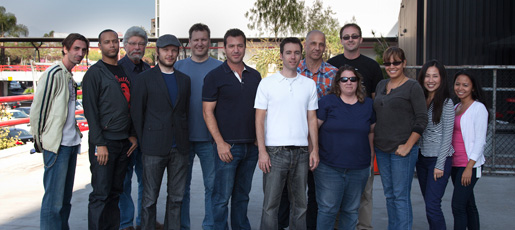
The crew at CBS Digital responsible for the remastering project for Star Trek: The Next Generation
Check out the sections below for a more comprehensive breakdown of the remastering effort this season, but if you’re going to take away just one headline from this review then let it be this – the work on display in Season 6 is quite possibly the most impressive yet. The picture is virtually flawless and the visual effects are incomparable to anything I’ve seen previously. On to the analysis!
I. Live Action Footage
The task facing people like CBS Digital’s Sarah Paul, Sean Sweeney and Kiki Morris is gargantuan in nature: hunting through hundreds of original 35mm film reels to track down every last second of negative needed to rebuild the show from scratch. Sarah takes on her job as if it’s a military operation – every episode is broken down element by element in meticulous detail and at any one time she knows what she has and what she needs. Naturally with a show as complex as Star Trek: The Next Generation, film is misplaced over the years and when that happens the team have no choice but to resort to upscaling existing SD footage. The fifth season was hit comparatively hard by this issue, but thankfully the same can not be said for Season 6. CBS has managed to locate every piece of film necessary to ensure that the sixth season Blu-rays are presented entirely in high definition with no upscaling – fantastic news!
In standard definition, each season of TNG seems to be afflicted with its own particular problem. The old SD copies of TNG’s sixth season (and likewise Deep Space Nine‘s first, which was filmed at the same time) are incredibly soft, far more than earlier TNG seasons. It’s difficult to establish with any degree of certainty why the 1992-1993 seasons suffered so badly, but they’ve always stuck out to me like a sore thumb. Now for the good news – the newly scanned high definition live-action footage of Season 6 on Blu-ray looks phenomenal. Excluding the odd soft focus shot sprinkled throughout the season (“Time’s Arrow, Part II” has the highest amount of ‘hazy’ soft focus shots, although this is clearly an artistic choice) the new HD image is pin-sharp. The crispness of the newly scanned 35mm print is mindblowing – just wait until you see the colors in episodes like “A Fistful of Datas“!
http://youtu.be/rfYkloL3xbk
A special TrekCore Exclusive: We go behind the scenes of TNG Remastered as the original 35mm camera negatives for “A Fistful of Datas” are scanned in by CBS Digital film transfer technician Wade Felker.
CBS Digital’s Marvin Hildebrandt is responsible for adjusting the color timing of the HD footage to ensure a consistent look over the series. Colors are once again vibrant and pop off the screen in stark contrast to the faded and uneven color timing which plagued the SD master tapes. Flesh tones appear realistic, and the slight red tint which was noticeable on some of the previous sets isn’t quite as pronounced here. Black levels are well balanced for the most part; However there are some instances when blacks overwhelm dark scenes, crushing out fine detail (this is particularly noticeable in some of the Celtris III cave shots from “Chain of Command“). This is unfortunate, and extreme care should be taken if a darker-toned show like Deep Space Nine is ever remastered!
The cast and crew weren’t given many chances to shoot on location during the show’s penultimate season, but each of the three episodes that feature outdoor locations has a distinct feel to it: the hazy streets of 19th Century San Francisco in “Time’s Arrow, Part II”; the classic sepia-esque Western look in “A Fistful of Datas” and the distinctive alien lighting of Lore’s unnamed planet in “Descent, Part I“. The high definition experience gives these locations a wonderfully immersive other-worldly quality that really draws the viewer in. San Francisco and Deadwood are especially fun in HD – I was freeze-framing on many of the shots to pick out newly visible store-signs and street posters!

The town of Deadwood … you can almost feel that tumbleweed blow past you! (“A Fistful of Datas“)
Scenes filmed in low lighting generally perform much better thanks to the new high definition transfer, although I feel compelled to add a caveat here. While there are indeed huge improvements in episodes such as “Rightful Heir” (the underground monastery at Boreth looks particularly moody and atmospheric thanks to the new details visible), overly strong black levels have crushed out some detail in other episodes (“Chain of Command” is particularly affected – the texture of the away team’s dark uniforms is no longer discernible in some scenes).
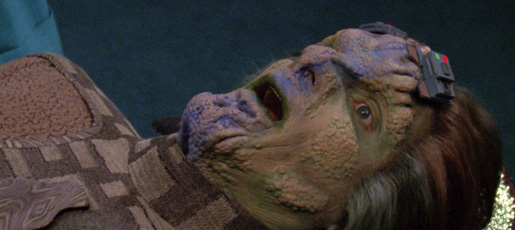
Jo’Bril’s Takaran makeup hides no secrets in high definition – check out those glorious colors! (“Suspicions“)
Small intricate details in sets, costumes and makeup are finally made visible in high definition. This is especially noticeable in the sixth season due to the softness of the original SD master. You’ll have great fun picking out the various aliens stood around the dom-jot game in “Tapestry” (watch out for the Tailhead – a more familiar sight on DS9’s Promenade!); meanwhile, you’re bound to marvel at the terrifying Solanogen-based lifeforms in “Schisms” who look scary as hell in high definition – the makeup and costume hold up remarkably well! A few other things that especially stood out to me – the costumes in “Ship in a Bottle” and “A Fistful of Datas” look particularly rich in HD, and the makeup on aliens like Jo’Bril (“Suspicions“) now boast some amazing detail that has always been lost due to the limitations of standard-def.
Finally, I can’t write about Season Six without mentioning “Birthright“. At long last we get our first glimpse of the Deep Space Nine sets in high definition. Both the promenade and replimat are represented here and they don’t disappoint. The replimat looks especially colorful, with the flora decorating the ceiling sparkling in HD. The brief glimpse of Morn made me smile warmly, and his Lurian makeup only serves to tease the viewer more about the prospect of a DS9 remastering project. Come on CBS, sort out the budget and make it happen!
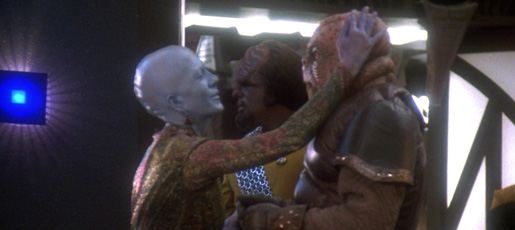
Morn makes a high-definition appearance in “Birthright, Part I“
II. Visual Effects
CBS Digital‘s work recreating the visual effects for Star Trek: The Next Generation has been consistently superb. As the show became more complex through its run, the team have refined their technique and kept ahead of the curve to ensure their work continues to meet the high expectations of fans. This project is a labor of love for so many of the team behind it, and it really comes across in the final product. To take on the last three seasons of TNG consecutively is no mean feat, but judging by the results on display here, CBS-D have once again risen to the occasion and turned out some beautiful work.
Planet-Creator Extraordinaire Max Gabl is firing on all thrusters once more with another collection of alien worlds that look like they could have just been photographed by NASA. Max has a wonderful talent for mixing realism with fantasy in his art and through collaboration with Eric Bruno‘s compositing team, the Enterprise never looks out of place entering orbit of one of the new planetary creations. So what caught my eye in Season 6? Tagra IV from “True Q“, the newly-designated gas giant Deinonychus from “A Fistful of Datas” and the beautiful planetary collision in the Detrian system from “Ship in a Bottle” (which I raved about in this article) all deserve worthy mentions. However, I reserve some of my highest praise for the varied shots in “The Chase” – one of my personal favorites from Season 6 – and the firestorm-plagued Bersallis III from “Lessons“. Bersallis in particular looks utterly terrifying from orbit, with the huge scale of the firestorms clearly visible. The destruction of Indri VIII in “The Chase” as well as Loren III are stunningly recreated. Max had a full plate this season but has risen to the challenge with customary aplomb – great work, Max!
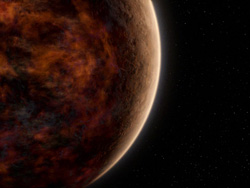 |
 |
| From the raging firestorms of Bersallis III in “Lessons” to the destruction of Indri VIII in “The Chase“, Max Gabl knows his planets! |
Eric Bruno and his visual effects compositing team at CBS Digital habitually up their game so each season things have a tendency to look that little bit more sleek and effortless. Eric himself worked on the beauty-shots of the Enterprise docked at Deep Space Nine in “Birthright, Part I” and has done a stand-up job of giving us our first taste of the station in high definition. DS9 is no longer flat and lifeless – the new shot screams grandeur and elegance with subtle shadows and sparkling lights giving the station a beautiful sense of scale and power. Rusted exposed hull plates jump off the screen in shocking shades of pink and yellow that haven’t been seen since the model was first filmed. Shots like this are a perfect example why CBS needs to lock down a Deep Space Nine remastering project before talented people like the gang at CBS Digital move on to bigger and better things.
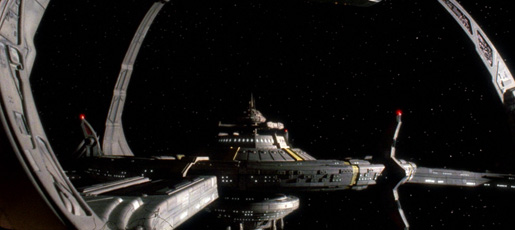
Commence station log! This could just be the cruelest tease in home entertainment history if CBS don’t hire these guys to work on Deep Space Nine pretty soon.
It’s worth mentioning a couple of other stand-out moments from this season’s visual effects: “Relics” and “The Chase“. The Dyson Sphere (“Relics“) remains one of the more alien and mysterious objects encountered in the Star Trek universe. At the time the episode was produced, its imposing scale was unprecedented – the design team put together some incredibly complicated maquettes and matte paintings whose details were all but lost in the murkiness of standard definition. Thankfully we can finally see the sphere in all its glory. It’s almost Borg-like in design – complex hull panels criss-cross the surface and stretch off far into the distance giving the impression of a truly huge size. Rusted features on the surface are also visible, leading us to believe that the sphere is ancient in origin. Detail like this is a joy to see, and I’m left dumbstruck knowing that it was there all along, hidden under the murk of standard def.
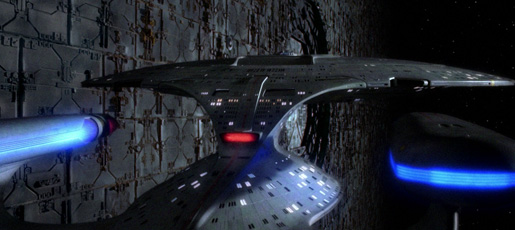
Prepare yourself! It’s the Dyson Sphere in gorgeous HD (“Relics“)
Finally, “The Chase” gives us the chance to see some pretty awesome starship encounters as the Enterprise warps around the galaxy looking for the key to life’s very existence. There is some beautiful compositing work on display here, especially as the Cardassian ships engage in combat against the Klingons and the Enterprise. I don’t think these models have ever looked so good. I can’t thank the team enough for their work – they’ve done Star Trek proud, something which I’m sure every fan who watches these Blu-rays can agree on!
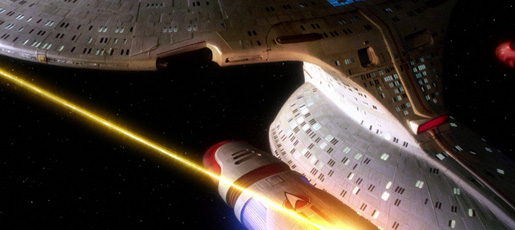
Wow! The Enterprise is struck by Cardassian fire in “The Chase“. Doesn’t she look amazing?
To highlight every piece of work done with the visual effects this season is an impossible task. There’s simply too much here to cover in a review – especially when I know you’re all wanting to read this as early as possible! So I’ll end the visual effects section with a cute story from “Realm of Fear“. This perfectly illustrates how the most innocuous looking shot on screen can mask days upon days of frustrating and repetitive work for the guys at CBS Digital. We all know the plot – Lt. Barclay encounters strange lifeforms inside a transporter beam which look a bit like giant worms and turn out to be stranded crewmembers of the science vessel U.S.S. Yosemite. Those giant worms were actually puppets whose complex movements were filmed and then composited over the transporter beam to give the cool final effect. I had the pleasure of visiting CBS Digital while this particular shot was being worked on, and discovered that the original production team had filmed dozens upon dozens of different takes of this giant worm, all moving in subtly different patterns over different time-spans. It transpired that no notes existed indicating which takes had been used in the final episode, so staff at CBS Digital had to painstakingly go through take after take trying to match by eye each movement with the blurry low-resolution SD master. Another perfect example why these guys are perfectionists – they’ll work tirelessly around the clock to ensure that even the tiniest details are correct.
Verdict time. It’s a no-brainer: Season Six represents another perfect example of CBS Digital’s quality work bringing TNG into the high definition 21st century. If ever there was an example where more than five stars were necessary to grade the product, this would be it!
Bonus Material
Roger Lay, Jr. and Robert Meyer Burnett are back again with another multi-part documentary covering the history of TNG – “Beyond the Five Year Mission: The Evolution of Star Trek: The Next Generation”. There’s no reunion special on this set – the duo had planned to get a collection of TNG directors together but couldn’t find a date that worked for everybody. Nevertheless, fans have a new trio of audio commentaries, deleted scenes and bloopers to keep them occupied.
So what about that documentary? “Evolution” combines three thirty-minute segments, “The Lithosphere”, “The Biosphere” and “The Noosphere”.
- “Part One: The Lithosphere” is frustrating – it’s almost as if this part doesn’t know what it wants to be. The first half of it is purely dedicated to Deep Space Nine. Now I’m a huge Niner, but this stuff really felt out of place to me – numerous archival interviews with Colm Meaney, Michael Piller and Rick Berman, talking about the premise of the show and the pilot, all interspersed with numerous (SD) clips from “Emissary“. I understand DS9 launched during TNG‘s sixth season, but there are almost no references to TNG here. I’d love to have heard the TNG crew’s reactions when they discovered a new series was on the way. At one point Rick Berman hints at potential dischord (“it wasn’t really a conflict, but things got a bit crazy”), but this is never followed up on! Meanwhile the second half of this part is a rather abbreviated compilation of snippets from creative staff including Naren Shankar, René Echevarria and writer Morgan Gendel. There are a couple of cute anecdotes in here (I enjoyed René’s story of how he wanted to kill Will Riker in “Second Chances“), but things are all too brief and the documentary chops unrelated stories together in a rather haphazard fashion.
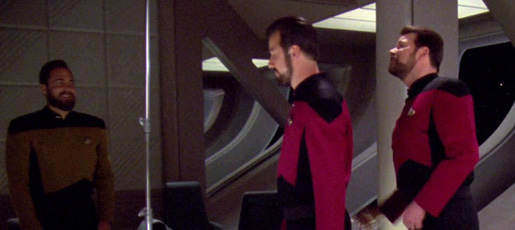
A Fistful of… Rikers?! Jonathan Frakes clowns about with his camera doubles during tests for “Second Chances“
- “Part Two: The Biosphere” is a marked improvement on the disappointing first part. Production Designer Richard D. James and Director of Photography Jonathan West both own this half-hour segment with some truly fascinating stories about their roles in the production of Star Trek. Listen out for James retelling how he convinced the producers to get rid of the expensive plexiglass windows from sets like the Observation Lounge after they plagued the film crew with unwanted reflections. Meanwhile West talks about his involvement all the way back on Star Trek II: The Wrath of Khan, filming Spock’s death sequence and catching pneumonia on Ceti Alpha II! Throw in some cool info about the reconstruction of the classic Enterprise bridge in “Relics” and Rick Berman revealing how Stephen Hawking rewrote some of the jokes in his “Descent, Part I” appearance and this segment is sure to entertain!
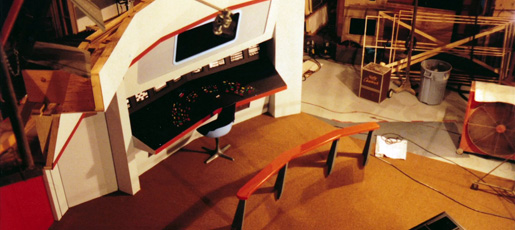
A corner of the classic Enterprise bridge is recreated for the arrival of Scotty in “Relics“
- “Part Three: The Noosphere” pulls together interviews with the principal cast on Season 6 and features the long awaited appearance of Guinan actress, Whoopi Goldberg. The Whoop is on strong form recalling how both Rick Berman and Gene Roddenberry couldn’t believe that a film-star at the peak of her career would want to guest on Star Trek. That said, my favorite part had to be when she apologized for saying “bullshit” only a few seconds into her interview! John de Lancie also shines in this segment – listen out for his famous dinner-party allegory and his intellectual breakdown of geek culture at the end of the segment. I found myself really enjoying this part, maybe a touch more than the second part. Nicely done!
Gag Reel: This season’s gag reel comes in slightly shorter than Season 5’s at 5:20 but it doesn’t pull any punches when inducing more fits of laughter. Right from the opening shot of Jonathan Frakes confronting Geordi with a drill(!) in “Aquiel” to Whoopi Goldberg’s distaste for Ferengi scientists (“Suspicions“; “Do you think that Ferengi f**k killed himself?!”), you’re guaranteed five minutes of raucous hilarity!
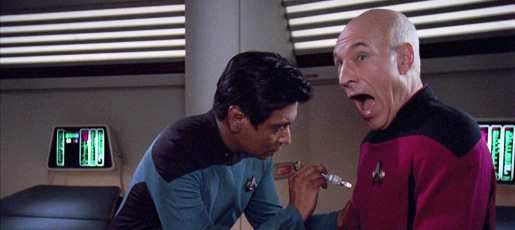
Patrick Stewart is clearly not a fan of doctors! More hi-jinks in this season’s gag reel
Audio Commentaries: The set contains three audio commentaries, newly recorded especially for this set.
- 6×04 "Relics" with Ronald D. Moore and Mike & Denise Okuda
- 6×15 "Tapestry" with Ronald D. Moore and Mike & Denise Okuda
- 6×21 "Frame of Mind" with James L. Conway and Jonathan West
Deleted Scenes: It’s such a treat watching through deleted footage that’s never been seen before – especially for a show as special as TNG. But when said footage includes an almost legendary clip of the late Jimmy Doohan which was culled from “Relics“, things are taken up a notch. We have an accompanying article which breaks down every single deleted scene included on this set with full review commentary and screengrabs – watch for it coming to TrekCore next Thursday, June 19th!
Summing up the bonus content on offer here, I couldn’t help but feel that the documentary could have been confined to two parts. The first part really is superfluous. Still, parts 2 and 3 don’t disappoint and served up enough fascinating stories and anecdotes to keep me interested. Here’s hoping that Roger and Robert have some surprises in store for the seventh season – let’s go out with a bang, guys!
The Bottom Line? Simply divine, and probably my favorite TNG Blu-ray release so far. Fantastic episodes, breathtaking HD remastering and a whole load of great new bonus features. If you only buy one of these Blu-ray seasons, make sure it’s Season 6!
– Written for TrekCore.com by Adam Walker, June 14, 2014
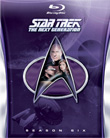 | Order Star Trek:
TNG - Season 6
on Blu-ray today!


 |  | Order TNG's
"Chain of Command"
on Blu-Ray today!
 |
Questions? Comments? Thoughts? Post them below and join in the discussion! Plus, don’t forget to pre-order your copy of Season 6 from Amazon using our links to help support TrekCore!
 | Order Star Trek:
TNG - Season 6
on Blu-ray today!


 |  | Order TNG's
"Chain of Command"
on Blu-Ray today!
 |

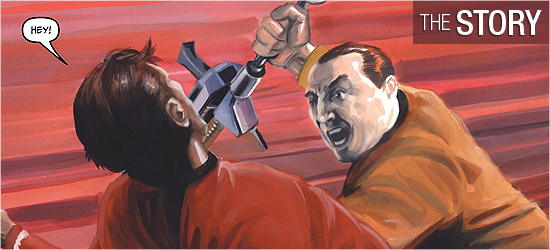
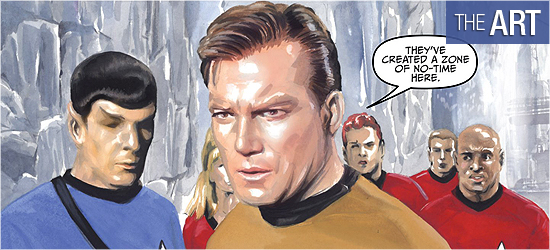
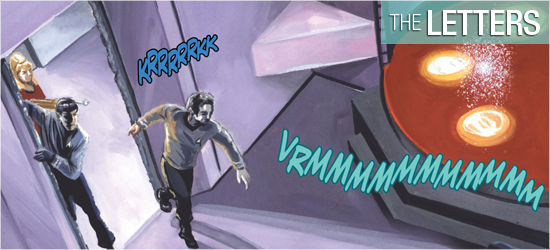
![]()
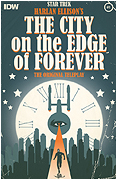

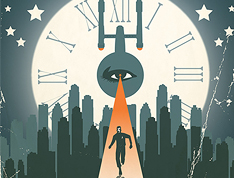
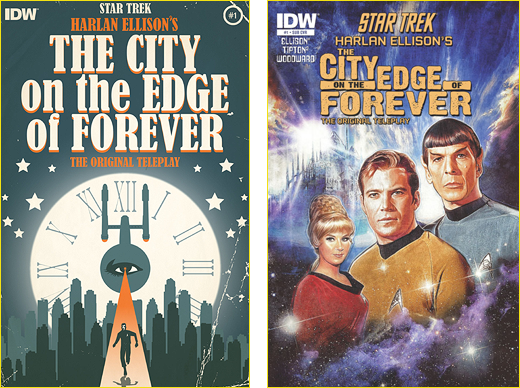
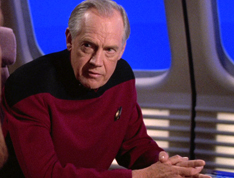
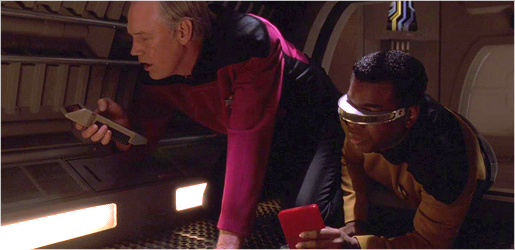
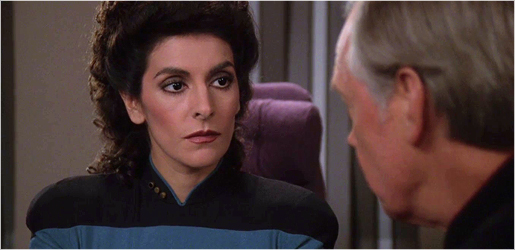
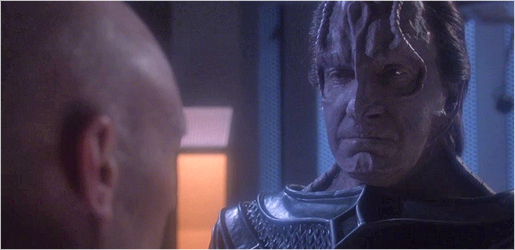
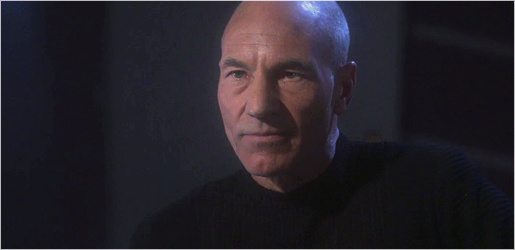
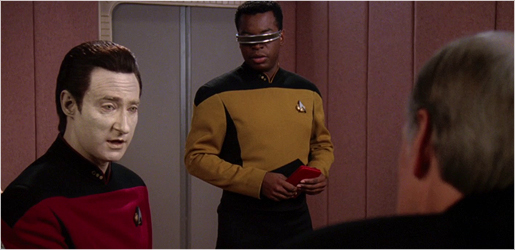
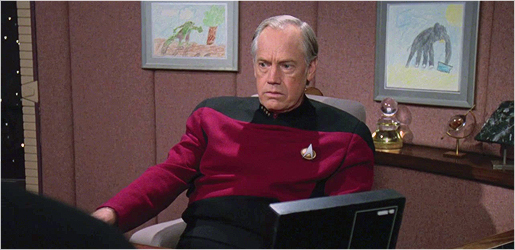
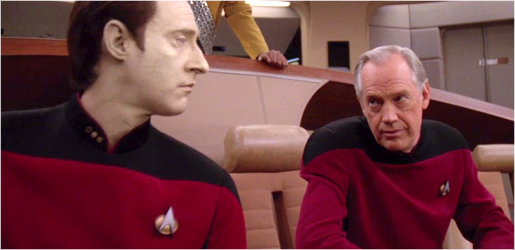
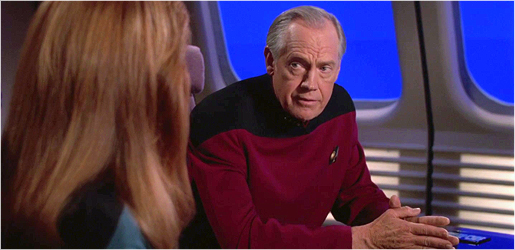
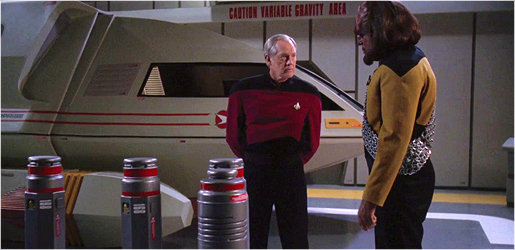


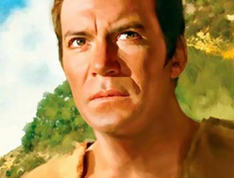

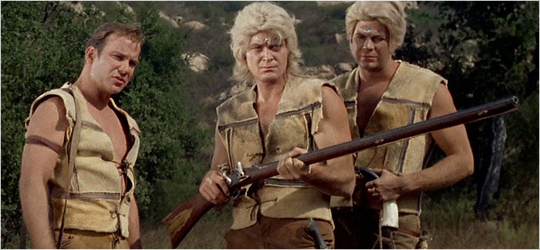
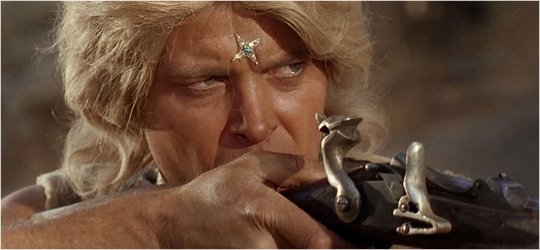

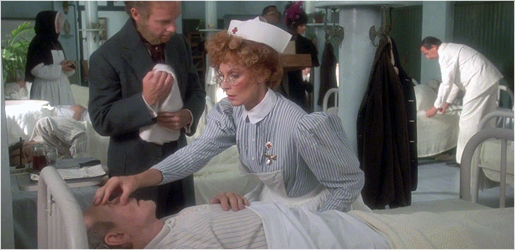
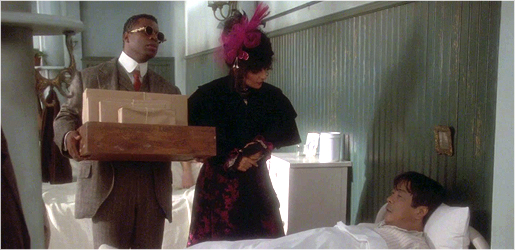
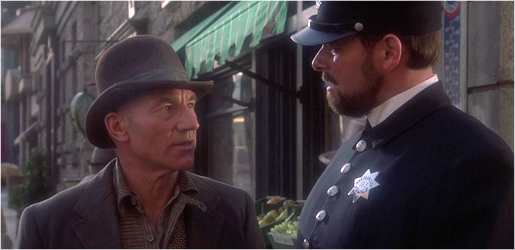
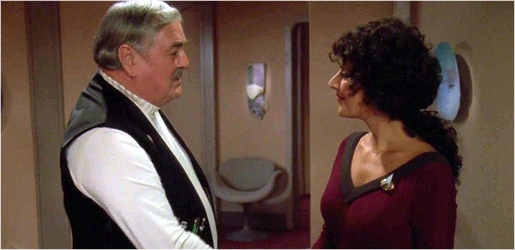
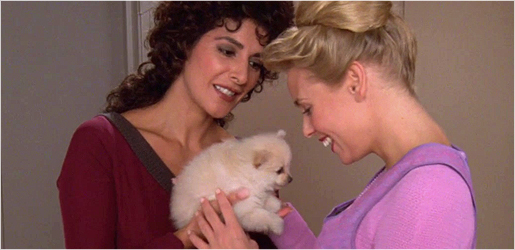
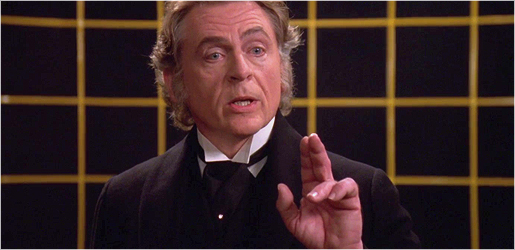
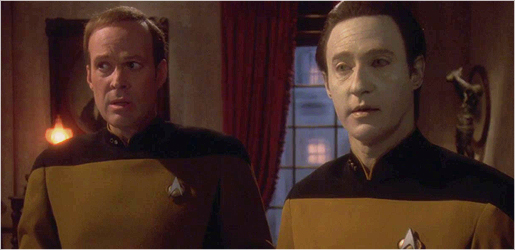
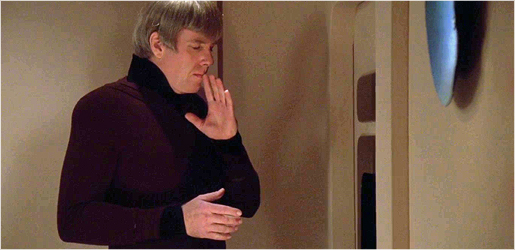
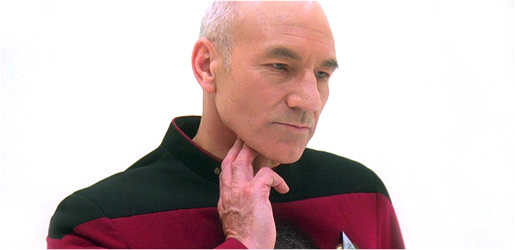

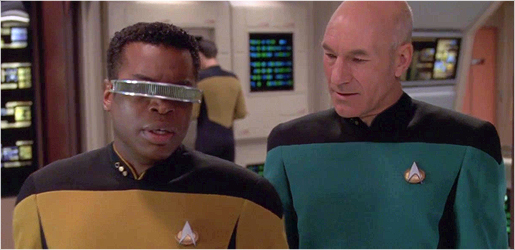
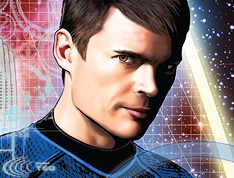
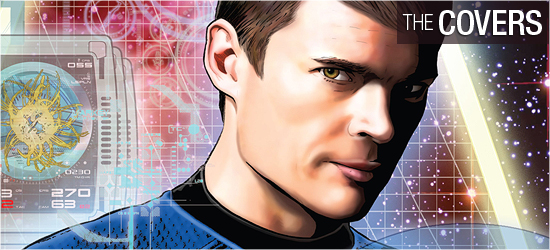

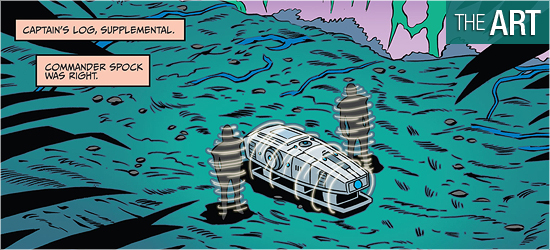
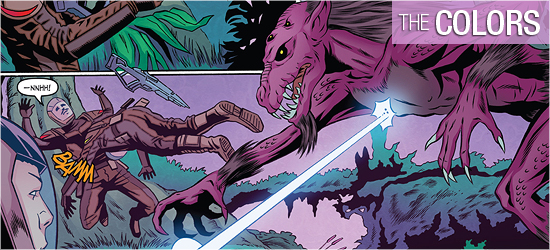
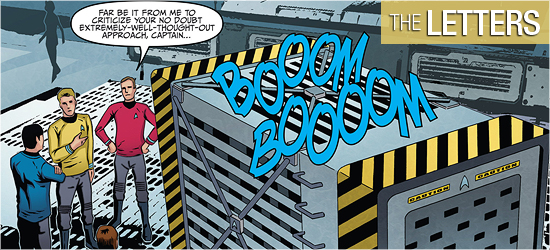
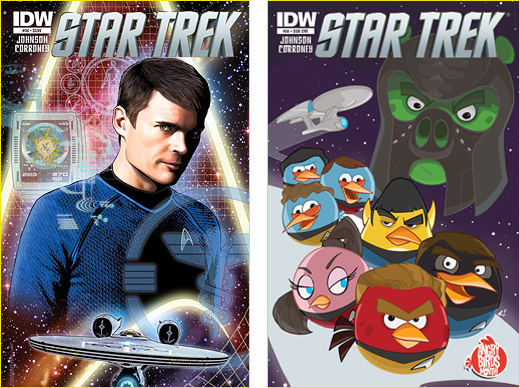
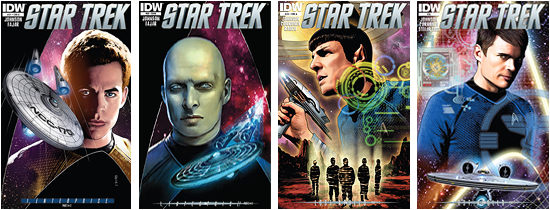
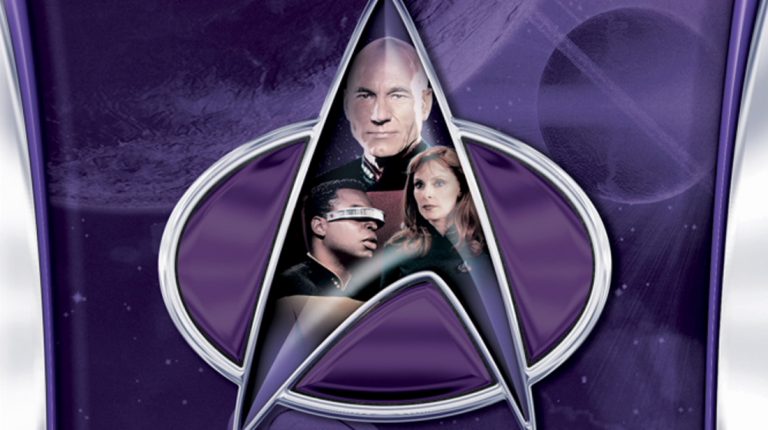
 Star Trek: The Next Generation Season 6
Star Trek: The Next Generation Season 6












